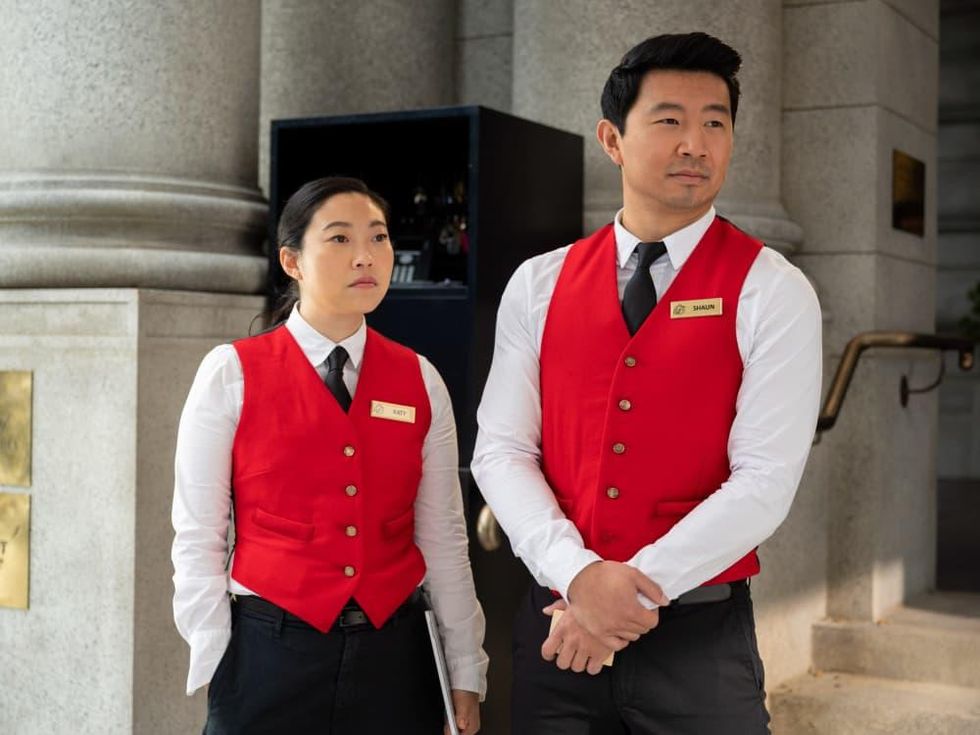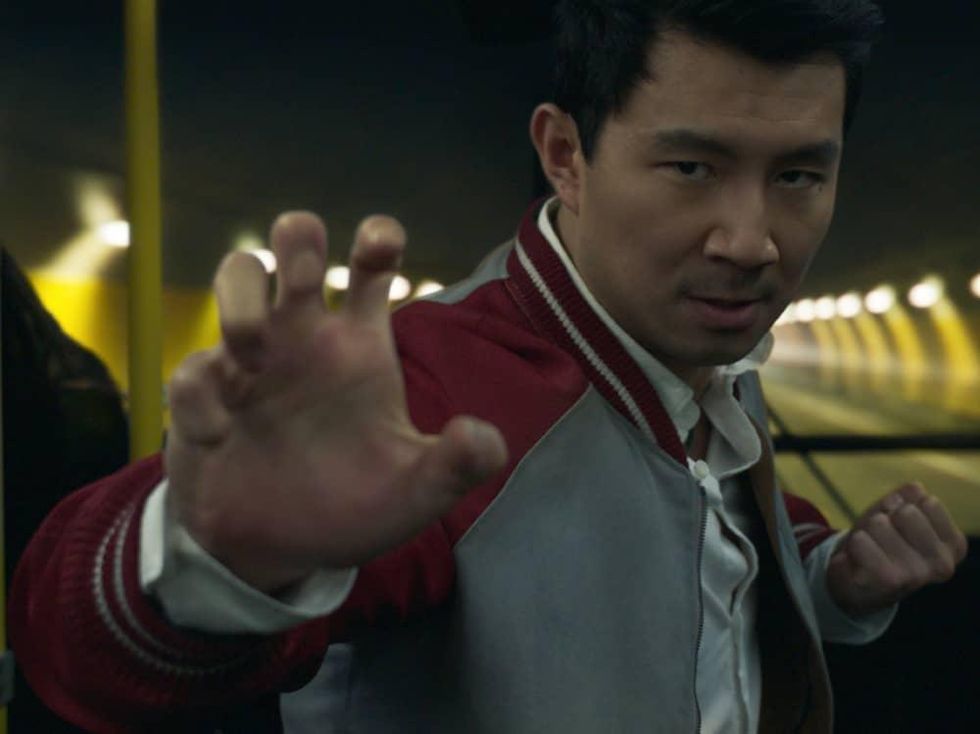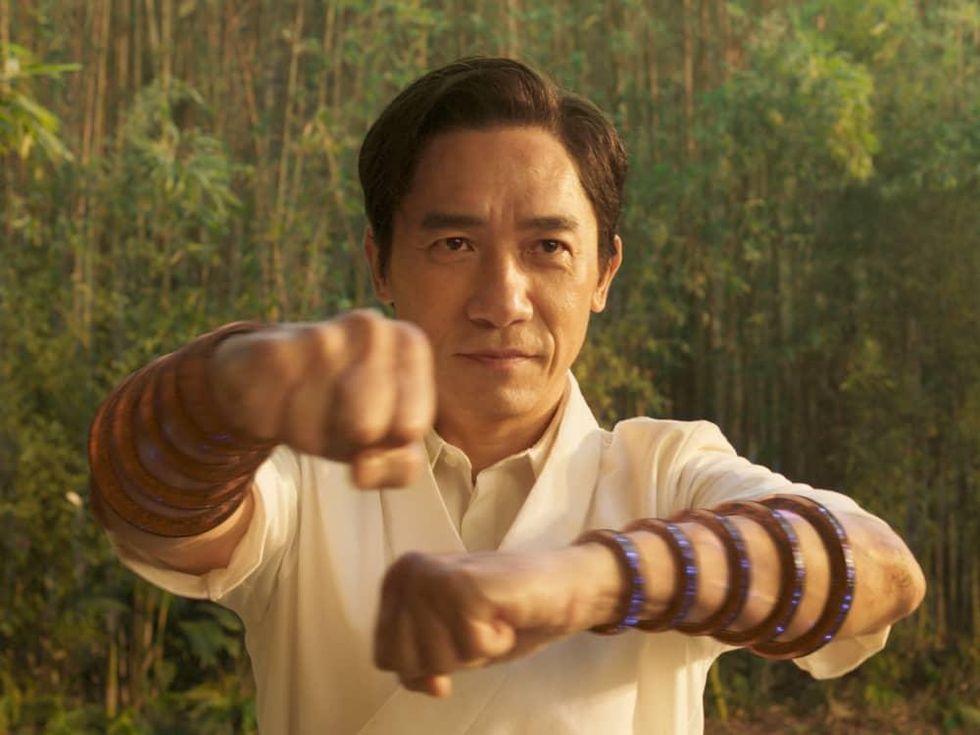Movie Review
Shang-Chi and the Legend of the Ten Rings kicks Marvel’s future back into gear
The one big thing that has been missing from the Marvel Cinematic Universe is a feeling of intimacy when it comes to the action. There have been plenty of highly cinematic sequences, but the abundance of computer-generated imagery, especially in the hand-to-hand combat, makes the scenes feel repetitive and, frankly, boring after they’ve been done so many times.
That deficiency is addressed in a great way in Shang-Chi and the Legend of the Ten Rings, the studio’s first film focused on Asian characters. Based on a character that first appeared in Marvel Comics in 1973, the film finds Shang-Chi (Simu Liu) living as Shawn in San Francisco, where he leads a semi-aimless life working as a valet alongside his friend Katy (Awkwafina).
As a prologue makes clear, though, he has special fighting abilities in his blood from his father, Wenwu (Tony Chiu-Wai Leung), and mother, Jiang Li (Fala Chen). An attempt to steal a pendant from Shang-Chi by a mysterious group of fighters leads him and Katy to make their way to Macau, where Shang-Chi is reunited with his sister, Xialing (Meng’er Zhang). The two soon discover that Wenwu, who possesses the titular rings, is bent on a mission for power that involves them both, a journey that is influenced by an overwhelming sense of grief.
Written and directed by Destin Daniel Cretton, with co-writing credits to Dave Callaham and Andrew Lanham, Shang-Chi is the second film in Phase 4 of the MCU, but given how backward-looking Black Widow was, it really feels like a fresh start. Save for a couple of brief cameos and minor references, it has almost no connection to previous Marvel films, which counts as a breath of fresh air in the never-ending saga.
Consequently, Cretton and his team are given the freedom to create the character of Shang-Chi without any built-in expectations. Almost from the start, Shang-Chi and Katy are a lot of fun to watch together, showing a level of friendship that is enviable. And that’s even before Shang-Chi starts showing off his kung fu skills, most memorably aboard a bus careening down multiple San Francisco streets and on scaffolding on the side of a building in Macau.
Where the film runs into some trouble is when it’s forced into using an abundance of CGI. There’s no doubt the scenes in the first half of the film contain a good amount of CGI, but they’re filmed in such an up-close and kinetic kind of way that every punch and kick is felt by the audience. That’s not the case in the second half, which finds people mostly fighting from a distance as the stakes are upped from the personal to the monstrous. Much of the emotional groundwork that had been laid by Cretton is overwhelmed by incomprehensible airborne combat.
Liu is a natural as the lead, making it a wonder that he mostly has bit TV parts on his resumé prior to this. He has an abundance of charisma both in and out of fighting scenes, so it’s easy to see why he was chosen for the role. With this, Crazy Rich Asians, The Farewell, and Raya and the Last Dragon, Awkwafina has become the go-to actor for telling Chinese stories, and she’s as fun and effective as always. Also great are Tony Chiu-Wai Leung and Michelle Yeoh, who commands the screen in a late appearance.
Shang-Chi and the Legend of the Ten Rings bodes well for the continued storytelling success of the MCU. While it has some supernatural elements, it’s at its best when it focuses on the innate martial arts abilities of its hero and the unique story of his family.
---
Shang-Chi and the Legend of the Ten Rings opens in theaters on September 3.




